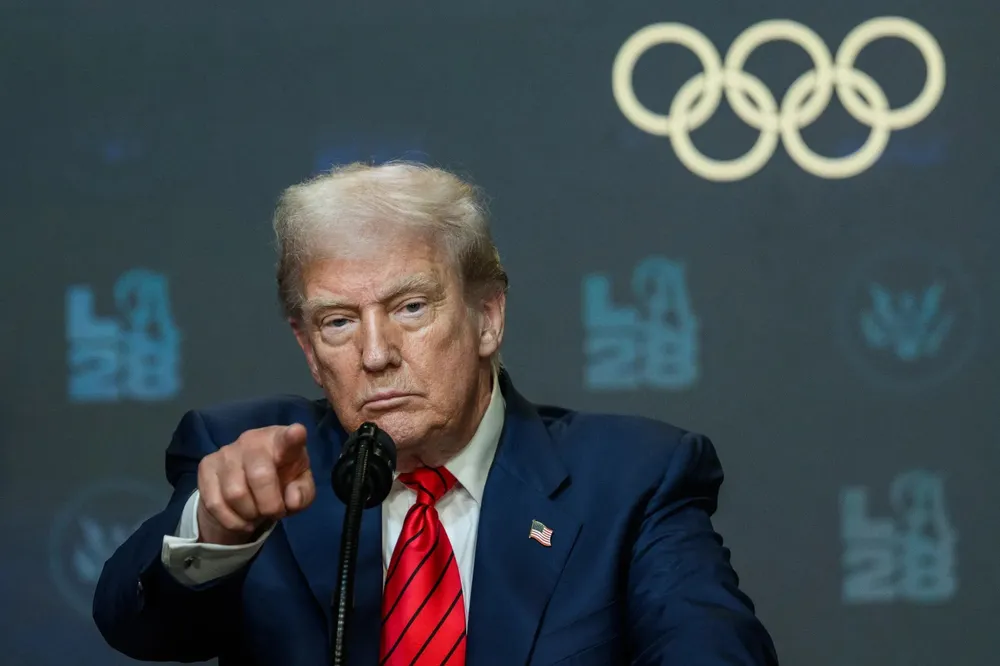Who's next? Timeline to disaster in Trump’s war on offshore wind
Stop-work order against Revolution Wind latest escalation in the President's ongoing war against the industry

In May 2024 when then-candidate Donald Trump vowed to put a stop to US offshore wind “on day one” of his next term, the industry took notice but was guardedly optimistic.
Would he stop future leasing and permitting? Probably. But would he dare interfere with fully permitted arrays? Or even projects under construction?
Surely the rule of law would weigh in the industry’s favour, allowing the 19GW legally approved under former President Joe Biden to proceed, or at the very minimum, the 5.9GW in construction.
Since then, though, Trump has shown a clear disregard for rule of law in many areas including energy, dashing offshore wind's hopes of a reprieve.
He has hammered it with order after order to stop both industry momentum and specific, fully approved projects, putting what Oceantic Network sees as $25bn in investment as well as the credibility of the nation at risk.
And now, with Trump’s move to kill Orsted’s 704MW Revolution Wind already 80% in the water, the industry is fully awake to the full scale of Trump’s power.
Below are some highlights of Trump’s war on offshore wind.
Memorandum in January
As expected, the memorandum killed future leasing and permitting for the industry.
In what was perhaps less appreciated at the time, the memorandum also ordered the secretary of the Interior to “conduct a comprehensive review of the ecological, economic, and environmental necessity of terminating or amending any existing wind energy leases, identifying any legal bases for such removal.”
This is line that set in motion the administration’s attacks on existing arrays.
The Department of Interior (DoI) oversees offshore energy development through the Bureau of Ocean Energy Management (BOEM).
Three projects were in advanced construction: Copenhagen Infrastructure Partners-Iberdrola’s flagship 800MW Vineyard Wind to Massachusetts; Dominion Energy’s 2.6GW Coastal Virginia Offshore Wind (CVOW); and Orsted's Revolution split between Connecticut and Rhode Island.
Equinor's 810MW Empire Wind 1 was just starting offshore installation, as was Orsted's 924MW Sunrise Wind, both to New York.
This would quickly prove to not be the case.
Voided permit for Atlantic Shores in March
This project had long been in Trump’s crosshairs, which he long wanted it “dead and gone”.
The cancellation of Atlantic Shores’ Clean Air permit came after a request by plaintiffs Save Long Beach Island in a federal suit against the array.
This put in play another element of Trump’s Inauguration Day memorandum, which allowed the Department of Justice (DoJ), defender of the federal government against lawsuits, to “stay the litigation or otherwise delay further litigation, or seek other appropriate relief consistent with this order.”
This opened the door to DoJ choosing to side with plaintiffs against the federal government’s own decisions.
As the industry would quickly realize, this was just the start.
Stop-work order against Empire Wind
“Pursuant to that review, staff of the Department of the Interior has obtained information that raises serious issues with respect to the project approvals” for Empire, Burgum wrote.
In contrast to Atlantic Shores, Empire had already gone into at-sea installation.
The industry was now fully awake to the potential of Trump to disrupt all projects.
And yet, hope persisted that this was all part of Trump’s unorthodox negotiating tactics, which was bolstered only weeks later.
Burgum said on social media that he was encouraged by Hochul's "willingness to move forward on critical pipeline capacity".
Following resumption of work at Empire, the administration focused on passage of the budget bill, including debates over just how hard it intended to hit wind and solar power through restrictions to tax credits.
Meanwhile, litigation and further efforts to curtail the industry continued apace.
Face-off in Maryland
Tax credits and tariffs continued to concern the industry, raising costs and uncertainty, yet projects continued to make progress.
Vineyard Wind regained momentum following its blade collapse last summer and is on track for completion by year’s end.
Sunrise has confirmed that pile driving of offshore foundations has begun.
But with Revolution’s stop-work order, the industry can only wonder: who's next?
(Copyright)